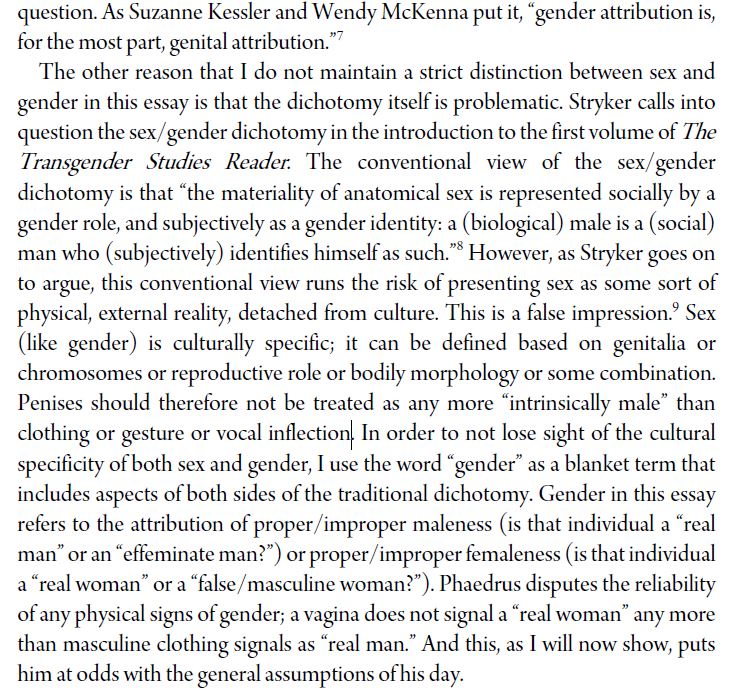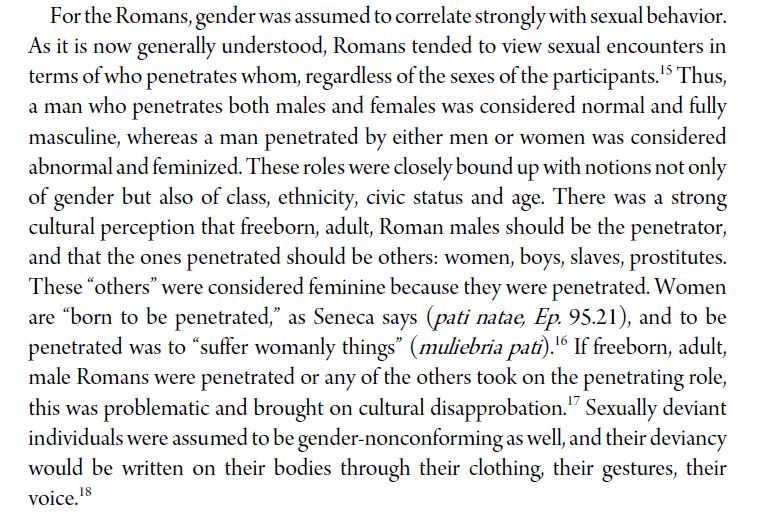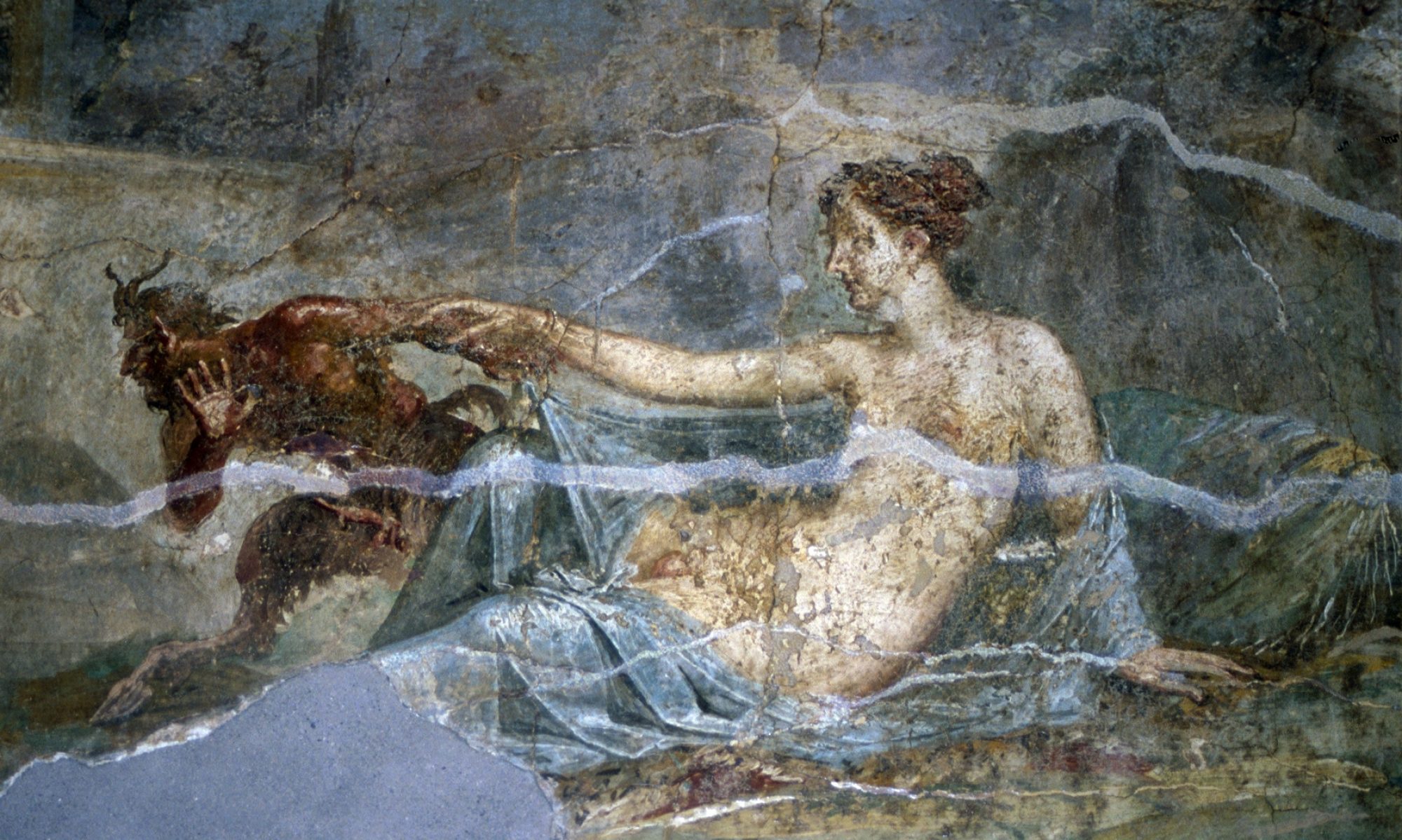
Both the Greeks and Romans were aware that not all humans have genitalia that conformed to a binary understanding of male and female sex characteristics. They also shared a rich mythology of individuals who either possessed both male and female sex characteristics or changed their sex characteristics.
There are also many myths and historical narratives of individuals who did not conform to gender norms regardless of their biological sex characteristics or pronouns, but these are not the focus of this unit! Learn more about Amazons and the Enaree. Learn more about Elagabalus and Sardanapalus. Learn more about Omphale. Learn more about Artemisia, Semeramis and Zenobia. Remember that these stories of non-conforming behaviors are often used as a means of re-enforcing dominant normative gender expectations through the ‘Othering’ of the non-conforming individuals or groups.
However, recent scholarship has pointed to problems with attempting to disentangle sex and gender. I quote here two extracts from Mann 2019, pp. 203-204, 206:



Since our previous unit was very image heavy let’s start with some texts in translation this week. The readings are all produced in the Roman era although two are set in earlier times and different places. One is the historical story of Heraïs who is assigned female at birth and becomes male, one is the story (myth?) of Iphis who is a girl raised as a boy who becomes a boy with divine aid, and thirdly an account of Favorinus who is a well known openly intersex individual who used primarily male pronouns and lived under the reign of the emperor Hadrian. Finally, we have accounts of the spirit/divinity Agdistus according to Pausanius and Arnobius, for which it is particularly difficult to disentangle the Greek/Roman/Christian interpretations to find original beliefs that gave rise to these accounts.
Please read and annotate each of the following.
Heraïs and others as recounted by Diodorus
Iphis as told by Ovid (see below for further readings on this)
Favorinus according to Philostratus
Agdistus according to Pausanius and Arnobius
The following extracts from Brisson, Sexual Ambivalence offers possible interpretation and context for these narratives. Please remember you are not required to believe Brisson. As you read an annotate feel free to critique his interpretations.
This reading describes historic systematic violence against non-binary individuals.
While much of the focus in Brisson is on the rejection individuals who sex characteristics do not meet societal expectations, notice that this is only a small portion of evidence on Favorinus’ life experience. Likely his social status and wealth protected him at an early age and he was able to leverage these and his intellectual skills to create a different legacy for himself. I use male pronouns to refer to him as to the best of our understanding this is how he described himself. Likewise, note how the other historical narratives also emphasize the desirability to be able to claim maleness and that this gender conferred a privileged status when an individual was able to enact normative gender roles, even if their bodies particularly their sex characteristics many not have conformed to societal ideals.
Hellenistic and Roman artists were also interested in the bodies of those with non-binary sex characteristics. Art historian, Andrew Stewart, summarized these works as follows in a chapter called “Hellenistic Art: Two Dozen Innovations” from 2006:


Further bibliography
Watson, J. L. “Reframing Iphis and Caeneus: Trans Narratives and Socio-Linguistic Gendering in Ovid’s Metamorphoses.” Helios 48, no. 2 (2021): 145-174. muse.jhu.edu/article/848865.
